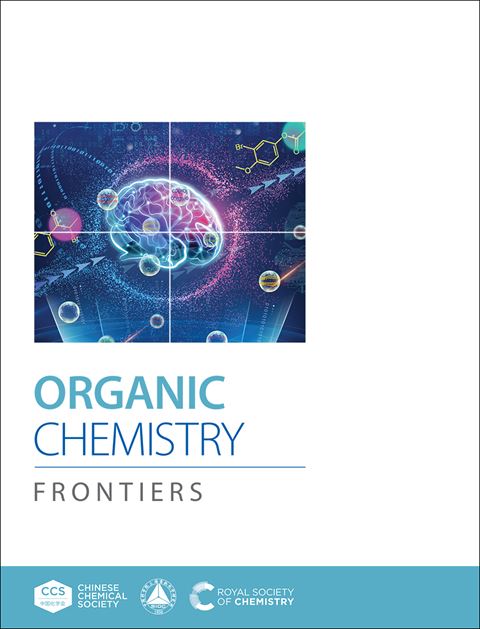The construction of aromatic rings by photocatalytic radical-induced cyclization reactions
IF 4.7
1区 化学
Q1 CHEMISTRY, ORGANIC
引用次数: 0
Abstract
Photocatalytic radical-induced cyclization reactions offer an efficient paradigm for constructing aromatic rings due to their unique environmental friendliness, independence from electronic effects, and high functional group tolerance. However, the high reactivity of intermediates in radical reactions, particularly the challenges of controlling it proceeds in an orderly manner according to the expected pathway and the reaction terminates after the ring is formed, which leads to diminished precision in the construction of aromatic rings. Compared to traditional cyclization methods for synthesizing aromatic rings, photocatalysis enables direct cleavage of high-bond-energy chemical bonds under mild conditions, eliminating the need for high temperature, high pressure, or stoichiometric oxidants. Furthermore, photocatalytic systems can serve as a bridge to connect multiple reaction steps, thereby streamlining the process and enhancing efficiency. Recently, significant progress has been made in applying photocatalytic radical-induced cyclization for the construction of aromatic rings. However, to date, there has been no comprehensive summary of this area reported. In this review, we try to provide a comprehensive perspective on the construction of aromatic rings via photocatalytic radical-induced cyclization. The discussion is organized into five sections based on the type of aromatic ring formed: monoheteroatom-doped aromatic rings, diheteroatom-doped aromatic rings, triheteroatom-doped aromatic rings, all-carbon aromatic ring, and non-classical aromatic rings. This review with a particular focus on elucidating reaction mechanisms, the synergistic effect of catalysts and light sources, and the applications of this strategy in pharmaceutical synthesis and materials science.光催化自由基诱导环化反应构建芳环
光催化自由基诱导的环化反应由于其独特的环境友好性、不受电子效应的影响和高官能团耐受性,为构建芳香环提供了一种有效的范例。然而,自由基反应中中间体的高反应活性,特别是控制中间体的挑战,是按照预期的途径有序进行的,在环形成后反应就终止了,这导致了芳香环构建精度的降低。与传统的合成芳环的环化方法相比,光催化可以在温和的条件下直接裂解高键能化学键,不需要高温、高压或化学计量氧化剂。此外,光催化系统可以作为连接多个反应步骤的桥梁,从而简化过程并提高效率。近年来,应用光催化自由基诱导环化技术构建芳香环的研究取得了重大进展。然而,到目前为止,还没有关于这一领域的全面总结报告。本文综述了光催化自由基诱导环化构建芳香族环的研究进展。根据形成的芳香环类型分为五个部分:单杂原子掺杂芳香环、双杂原子掺杂芳香环、三杂原子掺杂芳香环、全碳芳香环和非经典芳香环。本文重点阐述了反应机理、催化剂和光源的协同效应以及该策略在药物合成和材料科学中的应用。
本文章由计算机程序翻译,如有差异,请以英文原文为准。
求助全文
约1分钟内获得全文
求助全文
来源期刊

Organic Chemistry Frontiers
CHEMISTRY, ORGANIC-
CiteScore
7.90
自引率
11.10%
发文量
686
审稿时长
1 months
期刊介绍:
Organic Chemistry Frontiers is an esteemed journal that publishes high-quality research across the field of organic chemistry. It places a significant emphasis on studies that contribute substantially to the field by introducing new or significantly improved protocols and methodologies. The journal covers a wide array of topics which include, but are not limited to, organic synthesis, the development of synthetic methodologies, catalysis, natural products, functional organic materials, supramolecular and macromolecular chemistry, as well as physical and computational organic chemistry.
 求助内容:
求助内容: 应助结果提醒方式:
应助结果提醒方式:


